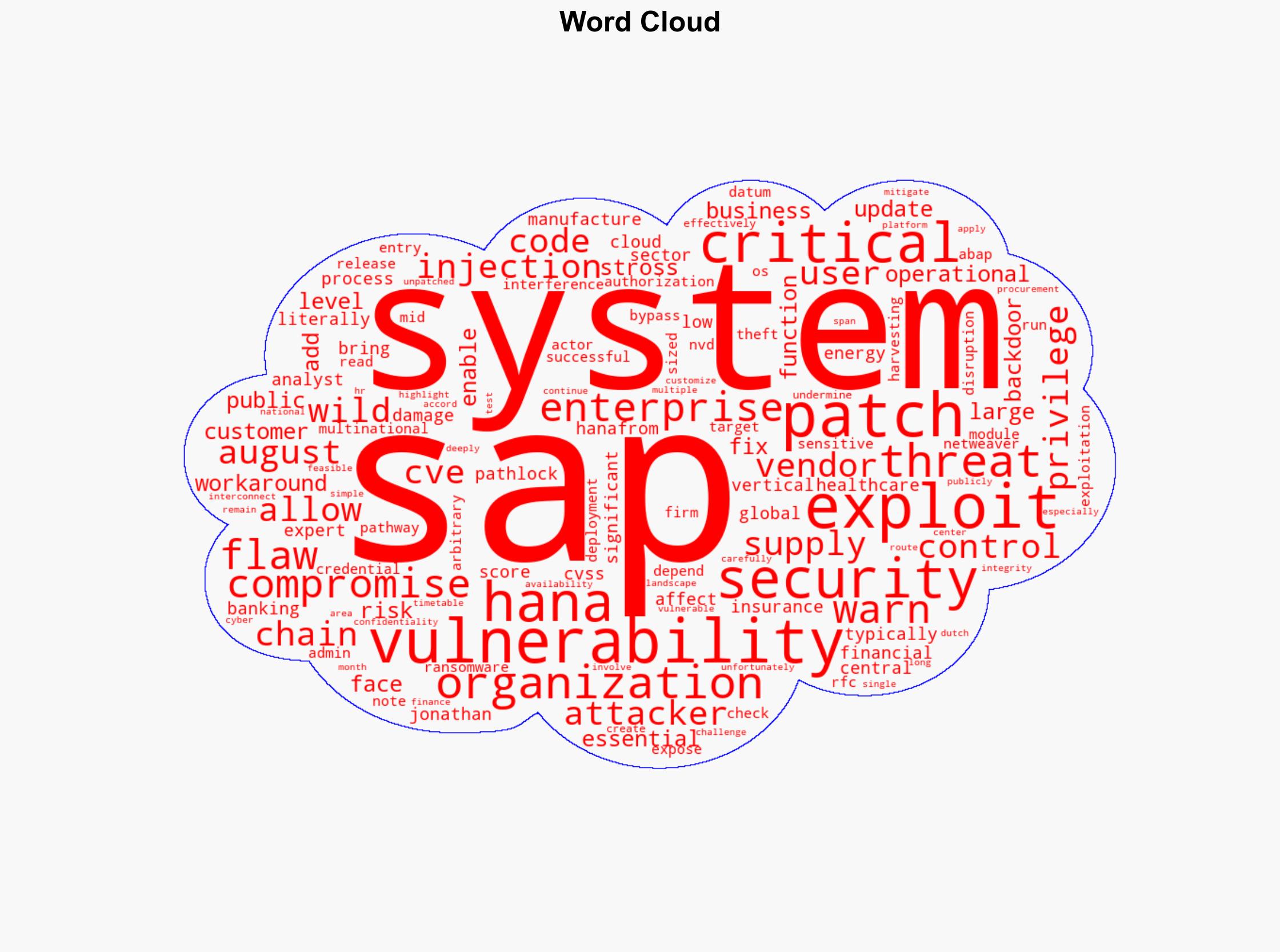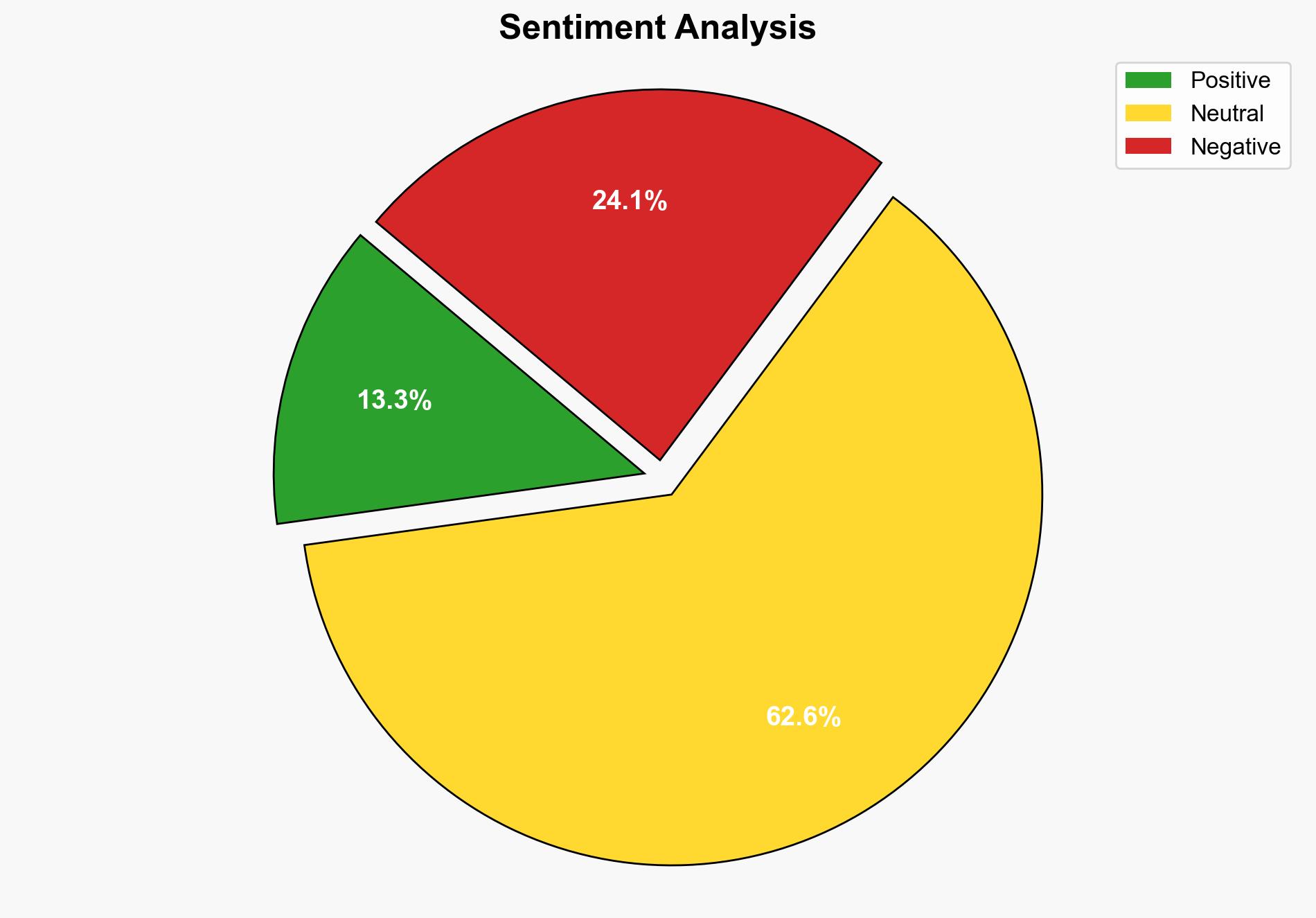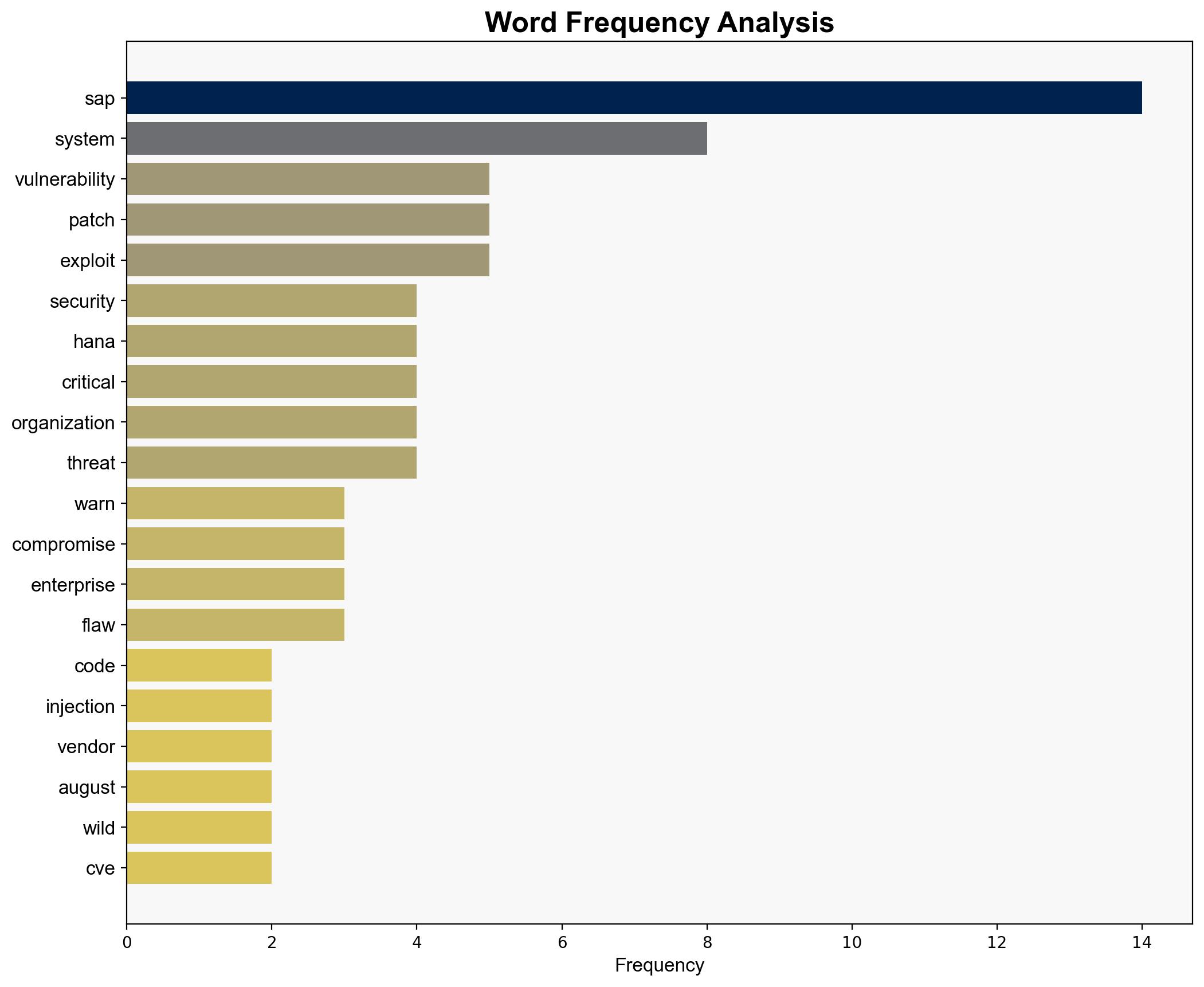SAP S4HANA Users Urged to Patch Critical Exploited Bug – Infosecurity Magazine
Published on: 2025-09-08
Intelligence Report: SAP S4HANA Users Urged to Patch Critical Exploited Bug – Infosecurity Magazine
1. BLUF (Bottom Line Up Front)
The most supported hypothesis is that the vulnerability in SAP S4HANA, if not promptly patched, poses a severe risk to organizations using the system, potentially leading to significant operational disruptions and data breaches. Confidence level is high due to the critical nature of the vulnerability and the widespread use of SAP systems. Immediate patching and enhanced monitoring are recommended to mitigate risks.
2. Competing Hypotheses
Hypothesis 1: The vulnerability will lead to widespread exploitation, resulting in significant operational disruptions and data breaches across multiple industries.
Hypothesis 2: The vulnerability will have limited impact due to timely patching by most organizations and effective interim security measures.
Using ACH 2.0, Hypothesis 1 is better supported due to the critical CVSS score, the complexity of patching large SAP environments, and the historical lag in patch adoption. Hypothesis 2 is less supported given the reported hundreds of unpatched systems and the exploit being active in the wild.
3. Key Assumptions and Red Flags
Assumptions:
– Organizations will prioritize patching based on the vulnerability’s critical nature.
– The exploit’s presence in the wild will motivate rapid response.
Red Flags:
– Reports of ongoing exploitation despite available patches.
– Potential underestimation of the time required for patch deployment due to system complexity.
4. Implications and Strategic Risks
The vulnerability could lead to cascading threats, including data breaches, financial losses, and reputational damage. The economic impact could be significant, particularly in sectors heavily reliant on SAP systems like finance, manufacturing, and healthcare. Geopolitically, the exploitation of such vulnerabilities could be leveraged by state actors to disrupt critical infrastructure.
5. Recommendations and Outlook
- Immediate action: Organizations should prioritize patching and implement interim security measures such as enhanced monitoring and access controls.
- Best-case scenario: Rapid patch adoption mitigates most risks, with minimal disruptions.
- Worst-case scenario: Delayed patching leads to widespread exploitation and significant operational and financial damage.
- Most likely scenario: Mixed outcomes with some organizations experiencing breaches due to delayed patching.
6. Key Individuals and Entities
Jonathan Stross, SAP security analyst at Pathlock, highlights the critical nature of the vulnerability and the challenges in patching SAP systems.
7. Thematic Tags
national security threats, cybersecurity, enterprise risk management, critical infrastructure protection





